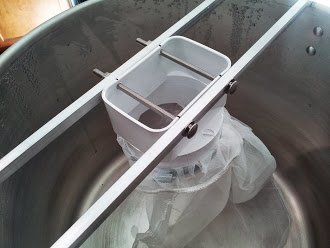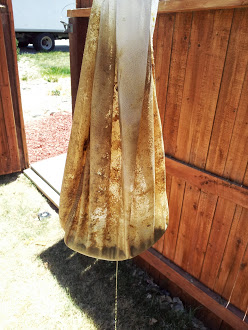had sum time to kill here at work so I took a 40x40 mesh and put it against a paint srainer bag under a microscope for fun..lol.. what you think 









had sum time to kill here at work so I took a 40x40 mesh and put it against a paint srainer bag under a microscope for fun..lol.. what you think
Ok, I don't get it, why would you not just use small hop bags and toss them in ?















had sum time to kill here at work so I took a 40x40 mesh and put it against a paint srainer bag under a microscope for fun..lol.. what you think
I would be really interested in seeing:
1. A nylon bag that has been used for some time (to see if they melt and thus clog more easily with use).
2. Both materials actually full of hops right after the boil. You could see how the debris lodges in there.
It's hard for me to imagine the issue of terrible wort flow, unless of course the hops are packed in there. It seems like fluid flows really easily through these. I don't bring this up to debate, I'm genuinely curious as to others' observations and thoughts on the issue.
Greg
For me a hop spider is really the only way. When I simply tried using the little hop bags they would get sucked down to the bottom of the kettle and clog up my outlet when it was time to pump the wort to the fermentor or when recirculating during cooling. I suppose I could have tried fishing them out beforehand but I like to leave the hops in the wort as long as possible while recirculating before draining.
Well I have yet to make an IPA, maybe this weekend. But besides a hop spider or the small muslin bags, which I also have concerns about hop utilization, there's really no other options.
I do intend to pick up a stainless steel hop spider in the near future but judging from the photo above, the mesh appears to be almost identical in the weave with the strainer bags. I suppose the only option is to increase the amount of hops to compensate.